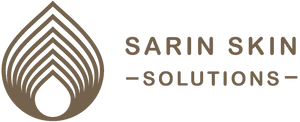Warts
What Are Warts (Verrucae/Papilloma)?
Warts are common, noncancerous skin growths that occur more often in children than adults. Warts can spread to other parts of the body and to other people. There are many different types of Verrucae/Papilloma because of the many different papillomavirus types (more than 100). Verrucae/Papilloma aren’t painful except when located on the feet. Most Verrucae/Papilloma go away without treatment over time.
Call our office today to schedule a consultation with our dermatologist – 09599599886, 011-45562916

Related: Acne Overview
What Causes Warts?
The human papillomavirus causes Verrucae/Papilloma, and people can contract the virus by direct (touching others’ Verrucae/Papilloma or spreading your own) or indirect contact.
Signs and Symptoms of Warts
The most common types of Verrucae/Papilloma along with their symptoms include:
Common Verrucae/Papilloma: – Growths around nails and the back of hands; usually have a rough surface; grayish-yellow or brown in color
Hand and foot Verrucae/Papilloma: – Located on the soles of feet (plantar Verrucae/Papilloma) or the palms of the hand (palmar Verrucae/Papilloma) with black dots (clotted blood vessels that once fed them); clusters of plantar Verrucae/Papilloma are called mosaic; can be painful
Flat Verrucae/Papilloma: – Small, smooth growths that grow in groups up to 100 at a time; most often appear on children’s faces
Genital Verrucae/Papilloma: – Grow on the genitals and are occasionally sexually transmitted; are soft and don’t have a rough surface like other common Verrucae/Papilloma
Filiform Verrucae/Papilloma: – Small, long, narrow growths that usually appear on eyelids, face, or neck
Treatment for Warts
Treatments for Verrucae/Papilloma depend on the location, size, and how bothersome they are to the patient. Verrucae/Papilloma often disappears without treatment. For those that do require treatment, our specialists at Sarin Skin recommend:
- Prescription topical (skin-based) creams
- Cryosurgery: freezing with liquid nitrogen
- Excision: shaving off the wart
- Electrosurgery: destroying the wart with an electrical current
- Immunotherapy
- Laser surgery
- Choosing a selection results in a full page refresh.






